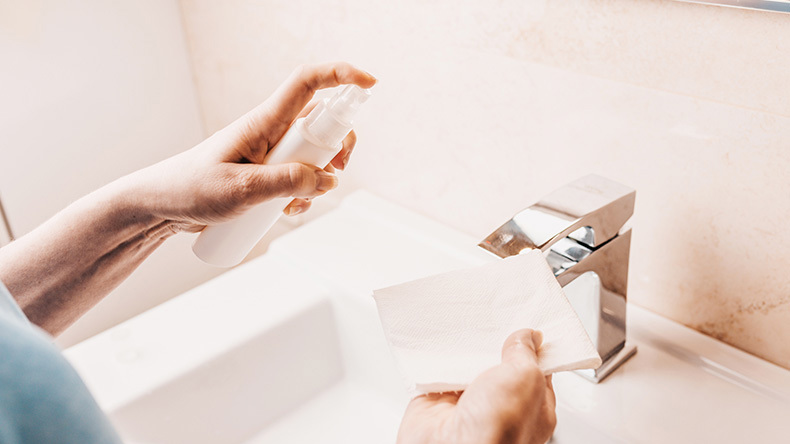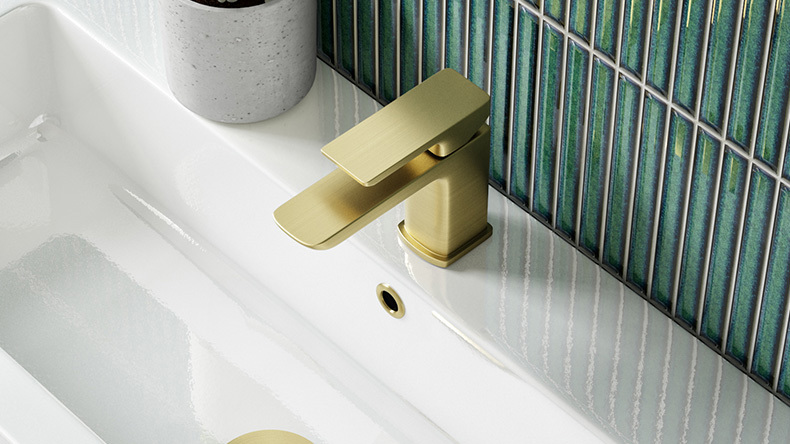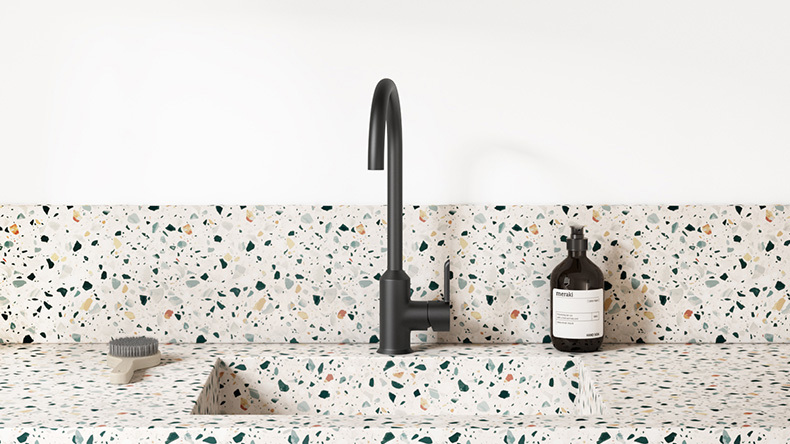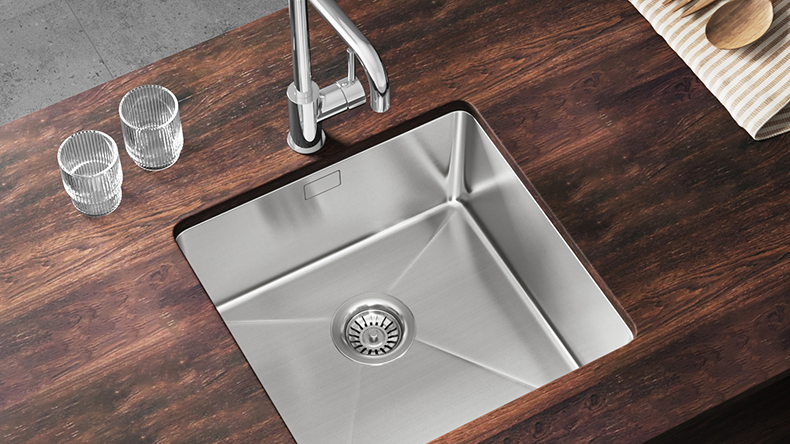Contents:
Cleaning Special Finishes
It's crucially important to avoid steel wool, abrasive brushes and scouring pads on your taps and accessories, as this can damage any finish. Always clean with a soft sponge and soapy water and stay away from harsh chemical cleaners that contain ingredients such as hydrochloric and sulphuric acid. Using these can damage the finish of your products.
PVD
PVD or ‘physical vapour deposition’ is a high density material that produces thin films and coatings. PVD coatings are extremely resistant to corrosion and scratches and boast high temperature resistance, good impact strength, and wonderful abrasion resistance.
More and more manufacturers are using PVD coatings for brushed brass and matt black finishes, as it is a stronger and long-lasting alternative to electroplating and powder coating, and it will not fade over time.

Electroplating
Electroplating is the process by which a product is coated with a very thin layer of Chromium, or a coloured alternative, using an electrical current. This aids the overall durability of the product, including its resistance to corrosion and general wear and tear.
Many brands use electroplating to produce a matt black finishes on bathroom tapware, showers, accessories and kitchen tapware.
Powder Coating
Applied as a free-flowing powder, this coating does not require a solvent to keep the binder and filler parts together, and is cured under heat to form a durable, high-quality skin coating. Powder coatings are durable but not as strong as electroplated or PVD coated products, as it can fade over time.
Cleaning PVD, Electroplated and Powder Coated Products
Even though these are strong materials, especially PVD, it's important to avoid harsh acidic-based chemicals and rough surfaces such as scourers. Instead, use soft cloths and dish soap for daily care and be sure to dry your hardware after cleaning to reduce water marks and staining.
For a tougher clean, use a75/25 lemon juice and water solution and a soft cloth to buff this into your product. It’s important to ensure this isn’t left on to soak for more than a couple of minutes before rinsing to prevent damage on the surface.
Brushed Brass
Brass is made from a combination of copper and zinc and is known for its hardness and workability. The material itself will not rust as it doesn’t contain iron, however it can react with oxygen which can give it a green patina from the copper oxidisation. If desired, the patina can easily be removed by cleaning with natural substances such as lemon juice, so follow the guidance above.
Matt Black
Matt black taps and showers are becoming increasingly popular in many UK bathrooms; it's a versatile and striking finish that suits many modern bathrooms and kitchens. There are a variety of ways to make matt black, including through electroplating or PVD.
It's important to keep your matt black finishes in good condition, as limescale and grime can be more visible on black surfaces.
How to Clean Brushed Brass and Matt Black
For daily cleaning of your brass and black assets, ensure that you rinse away any traces of soap and dry with a soft cloth. It’s worth having a cloth next to the tap so you don’t forget to do this regularly. Rinse carefully and dry any water marks as this will prevent water damage and maintain the sleek finish.
For limescale and grime, instead of using harsh chemical cleaners, use a 25/25 lemon juice and water solution for a tougher clean. It’s important to ensure this isn’t left on to soak for more than a couple of minutes before rinsing and always use a soft cloth to clean.
For a more thorough guide, check out our insightful article on cleaning brushed brass.
Chrome
Chrome, otherwise known as chromium, is a naturally occurring chemical element that is arguably the most popular finish for bathroom and kitchen assets. Most chrome bathroom and kitchen products are manufactured from cast brass that has been plated with chrome through electroplating. Chrome is a less expensive alternative to stainless steel and it has a more polished finish, however it not as durable and long-lasting against rust.
How to Clean Chrome
Chrome is a pretty low-maintenance finish to have but mineral deposits can show up on quite clearly, and it can lose its polished look. To clean chrome, soak a soft sponge in some hot water and rub on the chrome asset in a circular motion, drying thoroughly after to prevent streaks and water marks. Lemon juice can also help with brightening your chrome products and removing limescale and rust.
Stainless Steel
Stainless steel is a durable and affordable metal that’s used for many bathroom and kitchen products, especially kitchen sinks, and it has great anti-rust properties. This is a great material for bathroom and kitchen assets as it doesn’t require too much up-keep.
How to Clean Stainless Steel
The best way to clean stainless steel is to use a solution of warm water, mild soap and a soft cloth to wipe around the material. Method kitchen cleaner spray is the best way to give your stainless steel sink a deeper clean. For best results, use a soft cloth and spray the solution around your sink, rinsing and repeating to give a thorough clean. To maintain the shine, you can buff stainless steel with olive oil and a lint-free cloth to give an extra shine.
Unlacquered Brass
Once aged, unlacquered brass products have a tarnished ‘living’ finish that is less polished than standard brass or brushed brass. This makes it a great finish for rustic and industrial spaces, and it requires little up-keep as it has a distressed look. This material is manufactured without a coating to expose it to the elements, so cleaning it is slightly different from classic brass.
How to Clean Unlacquered Brass
Some people agree that the best way to clean unlacquered brass is to not! However, if you want to remove limescale and grime from the surface, a soft cloth and dish soap is enough to remove dirt and smudges.
We hope this guide has helped you navigate the best ways to care for your special finish assets. To continue along the same path, take a look at our guide for choosing the best material for your kitchen sink.











